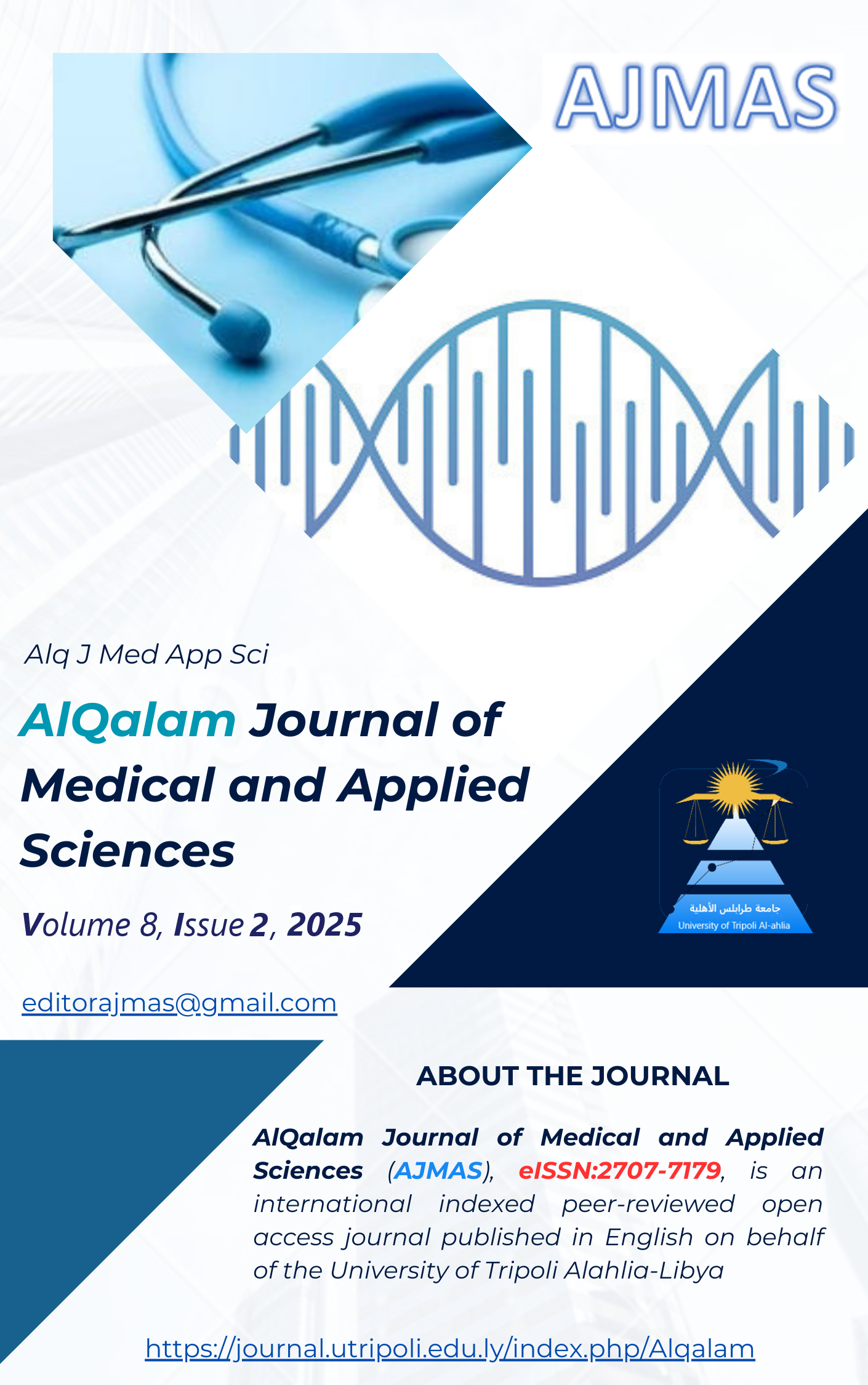Evaluation of Drug Interactions in Elderly Hypertensive Patients: A Retrospective Study
DOI:
https://doi.org/10.54361/ajmas.258278Keywords:
Hypertension, Elderly, Drug-Drug Interactions, Polypharmacy, Retrospective Study, Adverse Drug EventsAbstract
Elderly hypertensive patients often experience polypharmacy due to multiple comorbidities, increasing the risk of potential drug interactions (DDIs) and adverse drug effects (ADEs). This study examined the prevalence, patterns, and severity of potential drug interactions (PDIs) in elderly patients with hypertension, identifying the most common drug combinations and evaluating clinical risk factors. A retrospective cohort study conducted at Sebha Medical Centre, the medical records of patients aged ≥60 years who were prescribed antihypertensive agents were reviewed, excluding patients with incomplete medical records. Data on demographics, comorbidities, and treatment regimens were collected, and potential DDIs were classified based on severity. Among the 70 patients assessed (mean age 72.2±7.9 years; 52.9% female), the mean number of medications prescribed was 8.2. Potential drug interactions were identified in 81% of patients, resulting in 210 unique interactions, most of which were moderate to severe. The most affected drug classes were ACE inhibitors, aspirin, and furosemide. A significant correlation was observed between polypharmacy and an increased risk of potential DDI (p=0.026), while comorbidities showed no significant correlation. These findings highlight the high prevalence of polypharmacy and its effect on pDDIs risk in elderly hypertensive patients, underscoring the need for regular medication reassessment and clinical pharmacist engagement to reduce adverse effects in this population.
Downloads
Published
How to Cite
Issue
Section
License
Copyright (c) 2025 Nadia Alrawaiq, Bassam Khattab, Siraj Iseidiyah

This work is licensed under a Creative Commons Attribution 4.0 International License.















